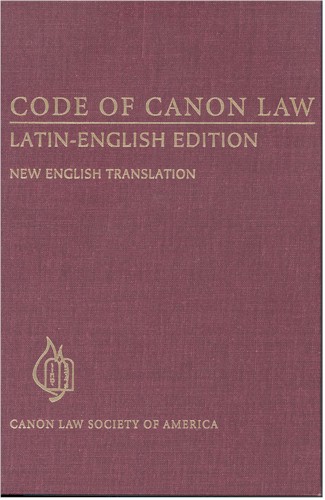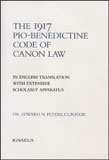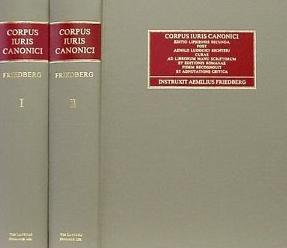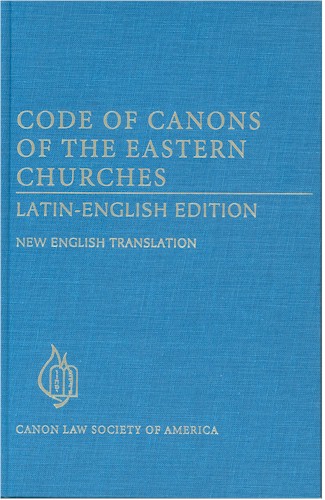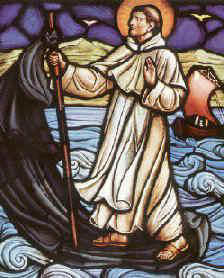|
To work for the proper implementation of canon law is to play an extraordinarily constructive role in continuing the redemptive mission of Christ. Pope John Paul II |
|
|
|
|
Resolution 1152 x 864 |
Updated 10 jan 2013 |
Review of
|
|
Edward Peters, Review of Velasio de Paolis, DE SANCTIONIBUS IN ECCLESIA: ADNOTATIONES IN CODICEM: LIBER VI (1986); Antonio Calabrese, DIRITTO PENALE CANONICO (1990); and Alphonse Borras, LES SANCTIONS DANS L'EGLISE: COMMENTAIRE DES CANONS 1311-1399 (1990), in The Jurist 55 (1995) 952-954. |
These three works are the leading
Latin, Italian, and French studies to date of penal canon law under the 1983 Code of
Canon Law. Canonists will immediately recognize de Paolis and Borras as major authors in the field of ecclesiastical crimes and penalties, while Calabrese, a rotal advocate, is perhaps better known for his works in religious law. Each of
these studies shares a similar methodology, namely, a sequential discussion,
usually canon-by-canon, of materials presented in Book Six of the Code. Each
share similar strengths and weaknesses.
During the revision of penal canon
law, there were repeated calls for the inclusion of canonical definitions for
various penal institutes. Unfortunately, these calls were, for the most part,
rejected as being mere exercises in scholastic science. Happily, though, what
the revision commission omitted each of these authors discusses at least to some
extent. De Paolis also includes some review of the importance of the
"Principles Guiding the Revision of Canon Law" to penal canon law.
Each author, of course, notes several signature characteristics of modern penal
canon law, including its brevity relative to the penal provisions of the 1917
Code and the greater place given in the new law to the necessity of exhausting
options for pastoral resolutions of potential penal situations.
From the point of view of utility,
each volume admits of easy preliminary research as a consequence of the
canon-by-canon discussion format, but they differ rather markedly in their
ability to serve for more detailed research. Only Borras, for example, provides
extensive footnotes to such things as conciliar texts and other canonical and
secular penal authors. Calabrese uses far fewer footnotes, and many of these are
simply references to related provisions of the 1983 code. De Paolis uses no
footnotes at all. Only Borras provides an index of canons discussed, while only
Calabrese offers an analytical index. De Paolis and Borras attach useful
bibliographies, but they include therein only more recent commentaries on modern
penal canon law or the revision process. For those of us who do not work in
Latin everyday, it is worth noting that de Paolis uses a very functional Latin style
in which, for example, word order tends to track that of modern languages.
Calabrese's Italian is also accessible to those who use that language primarily
for research, while Borras' French text may be termed positively graceful.
Because of the relative brevity of
modern penal canon law, and notwithstanding the practical importance of the
recent heightened emphasis on pastoral sensitivity in the penal arena, it is
my opinion that the extensive (if perhaps excessive) penal literature developed
under the 1917 code remains important for an informed application of the
Church's coercive function. Only Borras, though, makes an attempt to reference
this considerable body of material, and most of his references are to
French authorities. The failure of the authors to make more systematic use of
1917 code penal insights leaves the impression of a greater discontinuity
between the old law and the new than, perhaps, is warranted.
A related weakness in all three
works is the almost complete omission of materials related to penal procedural
law. Under the 1917 code, penal authors tended to omit penal procedures as being
of interest only to procedural experts, while the procedural experts, perhaps
being engrossed in marriage issues, avoided penal procedural discussions as
being of interest only to penal experts. But procedural law of any type exists
to serve the substantive goals of the area in question, and therefore
experts in substantive penal law will have to devote more attention to penal
procedural law if we, under the 1983 code, are to avoid the practical handicaps
faced by those who were called upon to administer penal law under the 1917 code.
It is perhaps here that one or several of the English language experts in penal
canon law might make an important contribution, especially as those authors
might approach penal procedural questions out of the experience of the
procedurally mature common law societies.
As a basic
orientation to the place of penal canon law in the Church, I believe that de Paolis' text would be most useful, while as a text for a formal course in
ecclesiastical crimes and penalties Borras' work is clearly the best.
Notwithstanding the omission of procedural topics, Calabrese's work would be of
use especially to ecclesiastical administrators and advocates. +++
|
